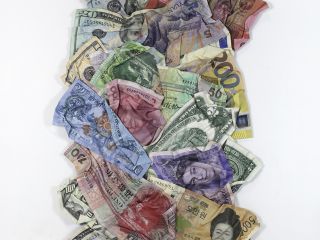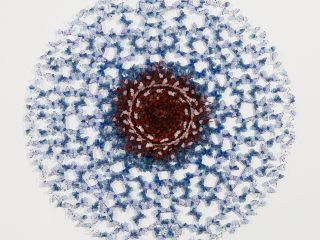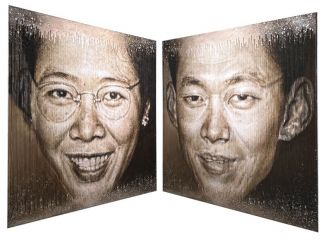Paul Rousso
A Flattened 500
mixed media on hand sculpted polystyrene, 111.76 x 7.62 x 139.7 cm
Chat with us on WhatsApp
About the artwork
“A Flattened 500” is a captivating artwork that exemplifies the innovative approach of artist Paul Rousso, who skillfully employs the technique of “Flat Depth”. This mesmerising piece features a life - sized 500 US dollar bill, magnified to an impressive scale. The juxtaposition of the monumental bill with the concept of Flat Depth challenges our perception of traditional two-dimensional art. Rousso’s meticulous craftsmanship in capturing every intricate detail and texture of the bill gives the artwork a sense of realism that invites viewers to contemplate the inherent value and transience of paper in our society.
About the artist
Paul Rousso's works speaks both to the physical and symbolic strength of one of humanity's most universal materials.
Paper is fragile and fleeting, yet it holds immense power - it has potential to carry ideas, preserves history, records value, and conveys beauty. From newspapers and books to banknotes and packaging, paper shapes our culture and daily lives, even in today's digital age.
By elevating paper into monumental sculptures and glossy wall reliefs, Paul Rousso reminds us of its paradoxical nature: humble yet influential, disposable yet transformative. The exhibition invites viewers to reconsider this everyday material, revealing its capacity to embody memory, narrative, and emotion.
Renowned for his hyperreal, oversized sculptures of crumpled currency, candy wrappers, newspapers, and glossy magazine pages, Rousso interrogates our relationship with media, materialism, and memory. His works playfully immortalize what is typically tossed aside—objects meant to be consumed and forgotten—elevating them into timeless icons of contemporary culture.
Rousso’s practice draws from a diverse background in scenic design, digital manipulation, and commercial art direction, all of which converge in his meticulously crafted sculptures.
Through a proprietary process of heat infusion on plexiglass and other materials, he sculpts paper-thin forms that mimic real-life textures with startling accuracy. The result is artwork that is both technically impressive and conceptually resonant—wrinkled banknotes and discarded ads become touchpoints for nostalgia, identity, and cultural commentary.
Influenced by Pop Art masters like Lichtenstein and Warhol, as well as the fantastical stylings of Dr. Seuss, Rousso infuses his work with wit, color, and scale. But beneath the playful surface lies a quiet urgency: a meditation on the impermanence of media in a world where physical print is vanishing.
By preserving these ephemeral artifacts in larger-than-life form, he invites viewers to pause, reflect, and consider what we value—and what we throw away.


.jpg)




